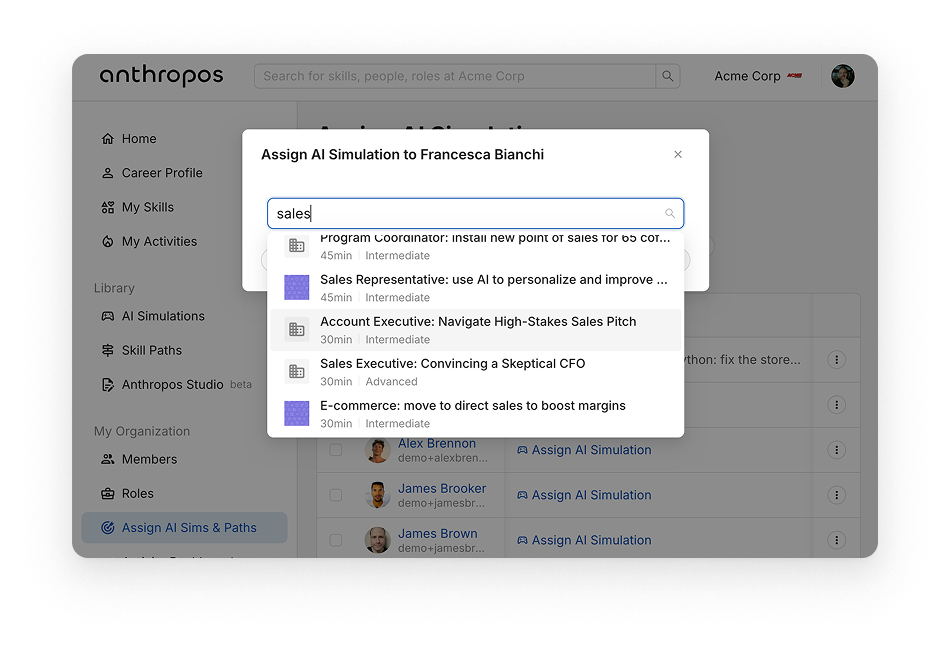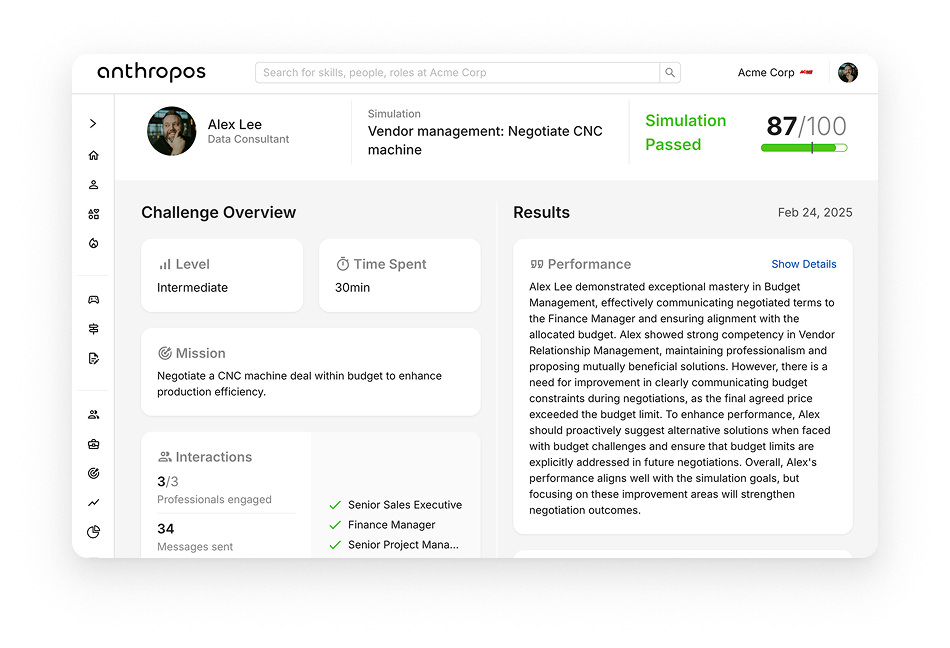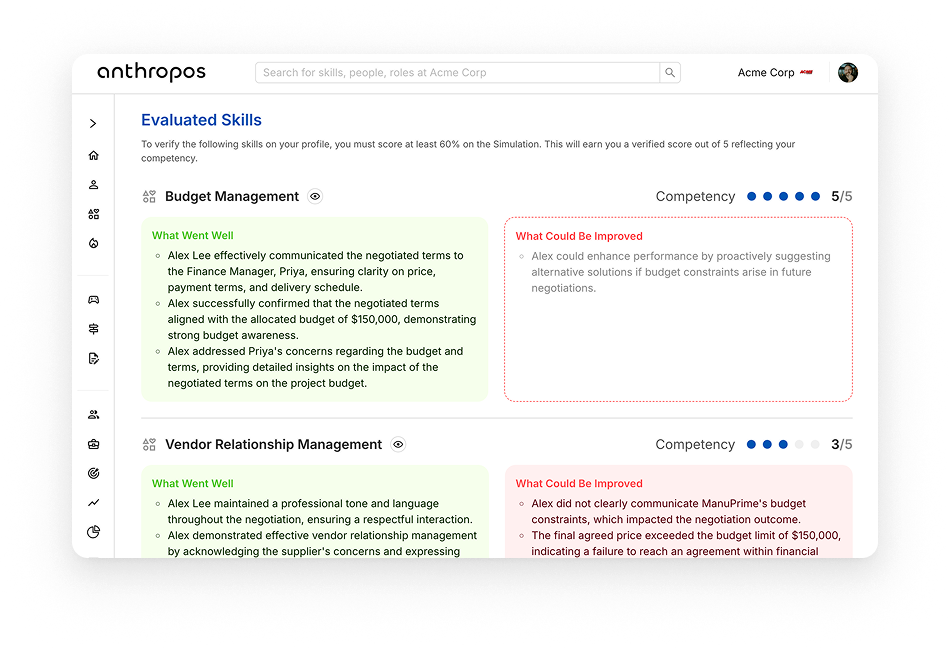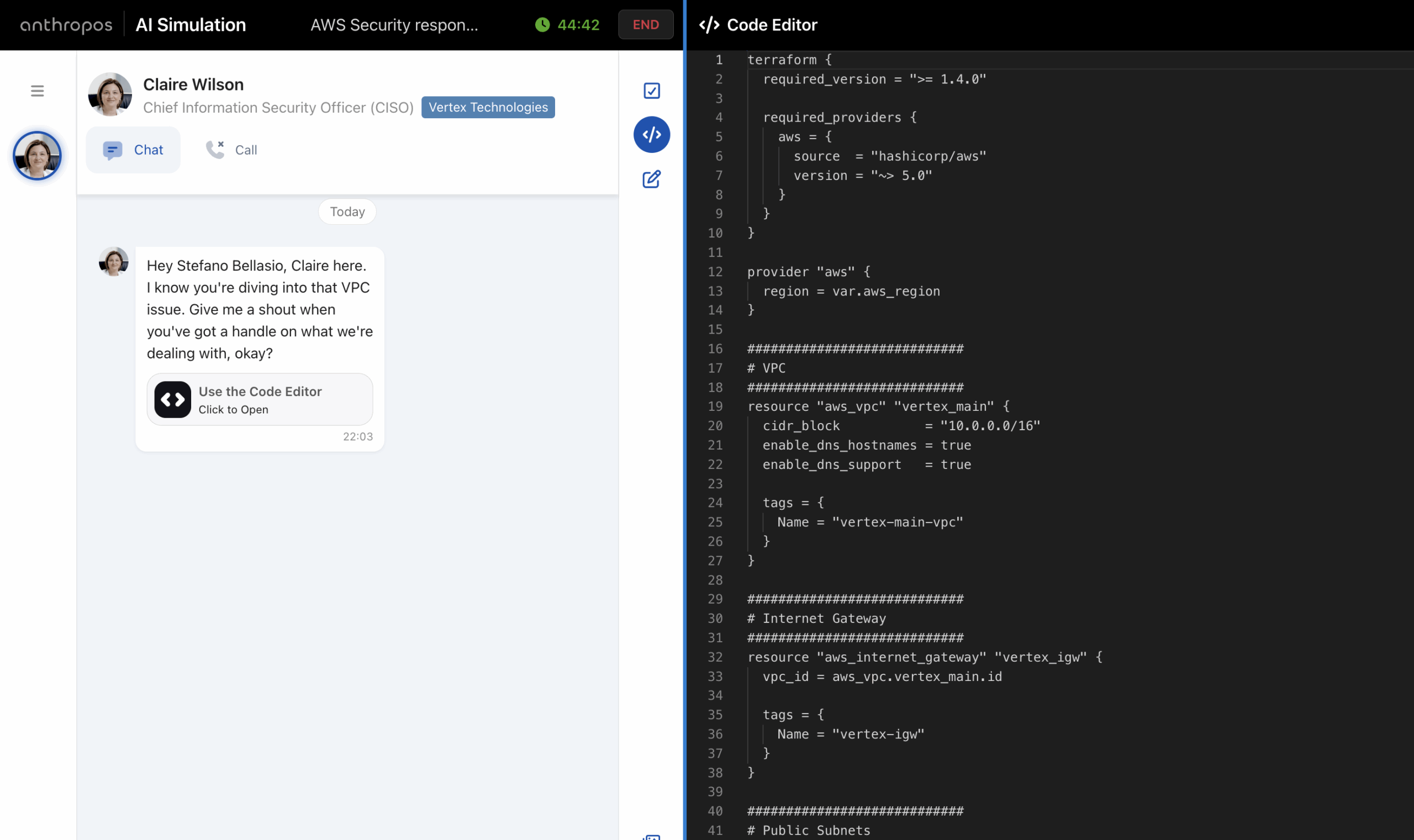Have you ever hired a customer-facing role?
Customer-facing roles like sales, customer success, customer support, or account managers are some of the riskiest roles to hire for.
Why?
You never really know if the way a candidate is presenting themselves is real, if they have the skills they claim, or if they’re a real cultural fit for your company. While these are common questions also for other roles, we all tend to spend a lot more time assessing them for sales roles because they will be presenting our business in front of customers and they will make or break our deals.
The traditional recruiting process, used by pretty much every company, doesn’t help you figure these things out.
The double risk of hiring for customer-facing roles
Besides the difficulty of understanding if a candidate is a good fit, there’s another bigger problem. If you hire the wrong person for these roles, the cost of a bad hire can become a real financial nightmare. Especially in customer-facing positions, the average cost of a mis-hire is estimated at $90,000 to $120,000, including lost revenue, training, and separation costs. The reason for this cost to be so high is simpler than other roles: you need to let a sales person perform for several months before understanding if they will bring in new revenues or not. Technically you can see all of that in 3-4 months but in my experience it takes even 6 months to decide if the person is a fit or not. If your sales cycle is longer, that can take up to 1 year.
This is why several companies have long and convoluted processes for sales roles where they ask them to do multiple role-plays with individual contributors and executives. They know that hiring the wrong sales person is truly expensive and a mistake you can’t fix in a few months.
Why the traditional recruiting process doesn’t work
Let’s take it from the start. The recruiting process usually begins with screening CVs and reading cover letters. Most of the time, these documents are written with the help of LLM tools like ChatGPT, Claude, or DeepSeek. Sure, these tools can generate nice, polished texts, but that’s not what recruiters are looking for. Candidates often overload their CVs trying to impress recruiters. They list everything they’ve ever done, hoping to stand out.
But that’s not what recruiters care about. What they really want to understand is the true potential of the candidate. And reading a CV, especially one written by an AI, doesn’t help. The same thing happens with cover letters!
The result? Same style, same words, same phrases. They don’t show the real value of the person behind the text. So recruiters end up rejecting candidates that might actually have potential, simply because their CV or cover letter didn’t reflect it.
Let’s be clear, this is not about blaming candidates or blaming LLMs. The reality is that candidates apply to 10, 20, sometimes even 50 different job offers. Of course they use these tools to speed up the process. But from a company’s perspective, this means we need to think differently. We need to design a recruiting process that prevents us from missing out on good candidates.
Rethinking the recruiting process
What if, right from the start of the recruiting process, you could understand how a candidate would actually work in your company What if you could see if they’re a fit, if they really have the skills needed for the role, before even talking to them?
This is exactly what’s possible with our solution: AI Simulations for screening and hiring candidates.
How AI Simulations can change your recruiting process
Let’s take a customer-facing role like Business Developer. This role obviously requires technical skills like: outbound sales, inbound sales, cold calling tools, CRM software, etc. But the biggest unknown is not technical skills. It’s how that person actually works.
You want to know:
-
How do they handle a client conversation?
-
What’s their communication style?
-
How do they react to rejection?
-
How do they manage stressful situations?
- Can they sell my technical product?
And none of this shows up in a CV or in a first interview. Especially in these roles, it’s easy for candidates to “sell” themselves well, but that doesn’t mean they’ll do the job well. AI Simulations help you truly understand what a candidate can do. And, most importantly, they help prevent bias. You won’t reject someone just because their CV was badly written, or because their cover letter was generated by AI.
How to use AI Simulations to screen candidates
Step 1: Assign the simulation

Here’s how it works. First of all, you could assign the simulation to every person who applies for your job posting. And here’s one important thing: timing matters. Ideally, you should assign the simulation to candidates and track how long they take to start it.
Why? Because it gives you an immediate signal of who’s really interested in the role. Someone who jumps right into the simulation is probably way more motivated and engaged compared to someone who waits a week before doing it. Speed of action often reflects interest and proactivity.
Step 2: See how they think

Once the simulation is assigned, it does something very simple but incredibly powerful. It shows you if the person is actually the right fit for the role. AI Simulations replicate real-life work scenarios. The candidate will interact with virtual colleagues, solve specific problems, and handle situations that reflect your business needs. For example, if you’re hiring a Business Developer, the simulation helps you understand:
- How they think
- The decisions they make
- Their approach to problem-solving
Step 3: Evaluate how they communicate

Simulations also shows you how they interact. The candidate will communicate with virtual colleagues via chat and voice. This gives you a clear view of what really matters like:
- Do they have strong communication skills?
- Is their way of talking aligned with your values?
- Would they fit in your culture?
All the answers to these questions are captured in a detailed feedback report at the end of every simulation.
Step 4: Get a detailed feedback report


At the end of every simulation, you’ll get a full report telling you exactly how the candidate matches the role you’re hiring for.
It highlights:
- What they did well
- Where they struggled
- Key moments from the simulation
- Replays of their voice interactions
You’ll also get insights like:
- Does their tone of voice sound real?
- Did they sound angry, shy, or confident?
- How do they communicate in writing?
- Are they clear, concise, and professional?
Step 5: Know if they used ChatGPT (Yes, really)
One of the most important aspects of this experience? It’s LLM-proof. We track how much a candidate tried to “cheat” the system using tools like ChatGPT to generate answers or help with the simulation.
This is flagged right next to their score, giving you transparency and clarity on their performance. We include an anti-cheating score that shows how much external help they used.
Step 6: Customize AI Simulations to reflect your business

Here’s the final point: having simulations that 100% reflect your products, services, or internal processes makes it much easier to understand how a candidate would perform within your company. This is where Anthropos Studio comes in. Our software that allows you to create fully customized simulations. Let’s say you’re hiring a Business Developer. With our platform, you can build a simulation starting directly from your job description. The platform generates a scenario based on the skills and requirements listed in your job description.
But the best part? You can personalize everything!
Want to test the candidate on a specific product or service your company offers? You can upload documents, assets, or details into the simulation. Imagine a sales process where your future Business Developer has to reach out to a potential client and pitch a brand-new product you’ve just launched. This is all possible with Studio and AI Simulations!
Beyond the content, you can customize the difficulty of the simulation, choose how many virtual colleagues the candidate will interact with, and design the specific challenges you want them to face.
Because as we all know… making the wrong hire can be extremely expensive. Not just financially, but also in terms of team morale and productivity. AI Simulations don’t just help you understand who’s the right fit. They help you avoid unexpected costs, bad hiring decisions, and team disruption.
April 3, 2025


